Los mexicas (náhuatl mēxihcah [
meː'ʃiʔkaʔ][1] ) —llamados en la historiografía tradicional aztecas— fueron un pueblo indígena de filiación nahua que fundó México-Tenochtitlan y hacia el siglo XV en el periodo Posclásico tardío se convirtió en el centro de uno de los Estados más extensos que conoció Mesoamérica asentados en un islote al poniente del Lago de Texcoco hoy prácticamente desecado, sobre el que se asienta la actual Ciudad de México. Aliados con otros pueblos de la cuenca lacustre del valle de México —Tlacopan y Texcoco—, los mexicas sometieron a varios pueblos indígenas que se asentaron en el centro y sur del territorio actual de México agrupados territorialmente en altépetl.
 Coatlicue, la madre de los dioses mexicas
Coatlicue, la madre de los dioses mexicas Escultura azteca de un hombre sosteniendo un fruto del árbol del cacao
Escultura azteca de un hombre sosteniendo un fruto del árbol del cacaoLOS ANTECESORES DE LOS MEXICAS

Se afirma que el mesoamericano fue "el hombre de maíz". Lo dicho es justo. Se nutrió de maíz, y el cultivo del maíz fue la base de su civilización. Con el modelo de vida de la planta de maíz construyó el arquetipo del devenir cósmico. Puede afirmarse, por tanto, que el pensamiento mesoamericano empezó a forjarse, a sentar las bases que no abandonaría durante milenios, cuando los cazadores-recolectores, 2 500 años después de haber aprendido a cultivar el maíz, se convirtieron en agricultores; esto es, cuando llegaron a alimentarse fundamentalmente de este grano, abandonando así su vagar estacional. El maíz nace hace unos 7 000 años, hacia el 5000 a.C.
La sedentarización mesoamericana empezó hacia el 2500 a.C.
La cuenca de México es una importante región de Mesoamérica. Los lagos y pantanos habían atraído desde tiempo inmemorial a una fauna hoy extinta; en busca de presas llegaron bandas de cazadores-recolectores, cuyos descendientes, con el paso de los milenios, se convertirían en cultivadores. A partir del sedentarismo surgieron caseríos simples; más tarde minúsculas aldeas; después centros de poder con imponentes monumentos religiosos; de los cuales Cuicuilco es una muestra; y por fin el coloso de Mesoamérica: Teotihuacan. En efecto, ya para el año 200 d.C., después de una larga vida, Teotihuacan empezó a adquirir las características de una verdadera ciudad. Cuatrocientos años más tarde el sitio alcanzaría una población aproximada de 85 000 habitantes. Fue el período conocido como el Clásico Mesoamericano. Pero Teotihuacan, tras su extraordinario esplendor, se extinguió como otras grandes ciudades de su época. Había sido el mayor emporio mesoamericano hasta 750 d.C.
Teotihuacan compartió su visión del cosmos, al menos en sus principios medulares, con los mayas, los zapotecos y otros muchos pueblos que fueron sus contemporáneos. Las concepciones básicas de dicho pensamiento eran, aunque enormemente desarrolladas, las que se habían heredado desde tiempos de los primeros sedentarios. Y las mismas concepciones persistieron a pesar del derrumbe del Clásico. Quienes siguieron los pasos de los teotihuacanos, mayas, zapotecos y otros pueblos de la que fue la época de mayor esplendor en Mesoamérica, persistieron en la forma de pensar y vivir el mundo.
Tras la decadencia teotihuacana, hombres del norte aparecieron en la cuenca de México. Convivieron con los habitantes que poseían la antigua tradición y absorbieron su cultura.
LA LLEGADA DE LOS MEXICAS
La cosmovisión que ahora se describe perteneció a uno de estos pueblos llegados tardíamente a la región de los lagos. Como otros que se establecieron en el territorio después de la caída de Teotihuacan, los mexicas hablaban la lengua náhuatl. Ocuparon unos islotes del lago de Texcoco y dieron a sus poblaciones los nombres de México-Tenochtitlan y México-Tlatelolco. La fundación de estos sitios fue hacia el año 1345. Cuando arribaron eran pobres cazadores, recolectores y pescadores lacustres que habían vivido de sus oficios acuáticos desde tiempos antiguos en lugares distantes.
Los mexicas -como el resto de los pueblos nahuas y, en suma, como todos los demás pobladores de la cuenca-, enriquecieron con su propia experiencia la antigua cosmovisión mesoamericana.
LOS DIOSES PATRONOS
Las sociedades nahuas de la época se agrupaban en unidades llamadas calpultin. Estas organizaciones poseían tierras propias que distribuían entre sus miembros con la condición de que las familias poseedoras las cultivasen adecuada y constantemente. El calpulli tenía gobierno propio, puesto en manos del téachcauh o "hermano mayor". Formaba una unidad tributaria, integraba un cuerpo militar y su barrio era uno de los distritos administrativos de la entidad política a la cual pertenecieran. La mayor cohesión ideológica del Calpulli derivaba de las concepciones religiosas. La principal concepción remitía al origen ancestral. Los miembros del Calpulli creían descender de un antepasado divino que se identificaba con el protector sobrenatural del grupo. Este dios recibía el nombre de Calpultéotl.
Los protectores divinos, sin embargo, no eran exclusivos de los calpultin. Los pueblos, las ciudades y hasta las grandes etnias tenían dioses patronos propios. Cómo se conciliaba la idea del dios-antepasado si cada individuo pertenecía a un Calpulli, pero al mismo tiempo el Calpulli pertenecía a unidades mayores. La solución se encuentra en la concepción mesoamericana de los dioses. Debe tomarse en cuenta que, así como los grupos sociales menores eran parte de otros mayores, en un orden piramidal, los dioses menores se fundían entre sí para formar seres divinos mayores que llegaban a proteger reinos o y etnias enteras.
Cuentan los mitos cómo estos seres sobrenaturales extraían a sus hijos de las cuevas de una montaña madre en las que habían permanecido en gestación desde los tiempos primordiales. Tras darlos a luz, los guiaban hasta los que serían sus establecimientos definitivos y les entregaban, por medio de una señal milagrosa, nuevas tierras.
Debe distinguirse, para entender lo anterior, entre el origen genérico de la humanidad y la creación particular de cada pueblo. Los dioses formaron primero la especie humana. Quetzalcóatl viajó al mundo de la muerte, tomó de allá huesos y cenizas, molió todo junto y amasó formando con ello una pasta, agregando la sangre extraída de su propio pene. De la mezcla nació la primer pareja de varón y mujer. Los pueblos nacieron después de la creación genérica, por etapas. Muchos de ellos quedaron en latencia, en el gran vientre de la Tierra, esperando su turno de aparecer en la historia. En el momento debido, cada uno de los dioses patronos extraía de Chicomóztoc -la montaña mágica de los siete úteros-, a su pueblo protegido, en un orden de siete en siete.
Los mitos también nos relatan cómo cada Calpultéotl dio a sus hijos una profesión especializada y les entregó los instrumentos de trabajo. En su conjunto, los dioses protectores habían inventado todas las artes y cada cual transmitía el oficio al pueblo que le había sido encomendado. Por ello los agricultores, aparte de dedicarse al cultivo de sus parcelas, tenían otros oficios: unos eran fabricantes de telas de algodón; otros, tejedores de esteras, orfebres, fabricantes de pulque, pescadores y cazadores de los lagos, etcétera.
Cuando los calpultin viajaban, portaban en un bulto sagrado la imagen de su dios, acompañada de otras reliquias. El dios vigilaba a sus hijos y hablaba en secreto a los sacerdotes portadores para fijar los derroteros e indicar, al final del viaje, la ubicación de la tierra prometida. Llegados ahí, se producía un portento que consagraba el sitio definitivo. Por ejemplo, los mexica-tenochcas tuvieron como señal sagrada la aparición de un águila posada sobre un nopal de tunas duras, un tenochtli, palabra que entra en composición del topónimo Tenochtitlan); y los mexica-tlatelolcas un remolino que en su parte alta tocaba el cielo y con su base un cañaveral en el cual encontraron un montículo, un tlatelli ( palabra que entra en composición del topónimo Tlatelolco); una serpiente enroscada, una flecha y una rodela.
Tras la fundación del sitio, el dios protector iba a morar en una montaña próxima o se le construía un templo desde el cual protegería a sus hijos, enviándoles la lluvia; irradiándoles la fuerza necesaria para la generación; alejando de ellos las enfermedades y ahuyentando de la población las fuerzas nocivas emanadas de los dioses vecinos. En México-Tenochtitlan se construyó la casa del dios patrono en la pirámide llamada "La Montaña de la Serpiente", aunque originalmente fue un edificio de pequeñas dimensiones.
Fuera del radio de dominio de su dios protector, los hombres del Calpulli se sentían desprotegidos: o entraban en el territorio de un dios ajeno, o llegaban a llanuras, barrancas o bosques habitados por los ohuican chaneque ("
los dueños de los lugares peligrosos"), seres que cuidaban los manantiales, los ríos, los árboles y los animales silvestres. Estos diosecillos podían atacar a los intrusos provocándoles un susto que les sacaba una de sus almas: el Tonalli. Debe aclararse aquí que los antiguos nahuas creían que cada ser humano poseía varias almas, entre ellas el Tonalli, fundamental para la existencia. Los chaneque capturaban el alma del sorprendido y la encerraban en la profundidad de la tierra. Si la víctima no la recuperaba por medio de un ritual específico, enfermaba y moría al poco tiempo. Por creencia en el susto, en la pérdida del alma y en la necesidad de recuperar el Tonalli perdido.
La idea de la protección del dios titular contribuyó a mantener la cohesión de las unidades sociales básicas. Aunque los miembros de los calpultin viviesen en pueblos o ciudades, no se diluían, mezclándose para formar una masa indiferenciada. Los calpultin quedaban uno junto a otro, pero en demarcaciones independientes. Esta es una causa de la importancia de la división de las poblaciones en barrios. Cada Calpulli habitaba en su territorio, levantaba su templo, sus miembros niños y jóvenes asistían a sus escuelas y todos se ocupaban en la profesión donada por su Calpultéotl.
EL ORIGEN Y LA NATURALEZA DEL MUNDO
Los mitos acontecen en el tiempo primordial, cuando los dioses estaban en proceso de dar a los seres del mundo sus formas definitivas. En los mitos se habla de las aventuras de los dioses (algunas de ellas sumamente crueles). Porque el relato mítico es una forma sintética de explicación de cómo cada ser mundano fue formado; y en los mitos los personajes son divinos porque los seres del mundo fueron creados a partir de los dioses. Los antiguos nahuas suponían que los dioses se habían convertido en los seres que poblarían el mundo. Por ello algunos dioses tenían apariencia o atributos vegetales o animales, pues eran los antecedentes y las esencias de las criaturas. También por ello muchos de los héroes son animales que hablan. No sólo el hombre, sino los astros, los animales, las plantas y las rocas estaban hechos de sustancia divina.
Cómo se convirtieron los dioses en seres mundanos. Cuando se encontraban en plena aventura, uno de ellos murió en sacrificio y se convirtió en el
Sol. Al salir por vez primera, transformó con sus rayos a los demás dioses. Los mitos dicen que pidió la muerte de sus compañeros divinos, y que todos ellos fueron sacrificados. Lo anterior debe interpretarse como la captura de la sustancia divina, que queda envuelta en una materia pesada, mortal; o sea que cada especie del mundo está compuesta por dos partes: una interior, divina, llamada "corazón" o "semilla" que constituye su esencia; otra, exterior, dura, pesada, que está sujeta a los ciclos de la vida y de la muerte. Por ello los seres individuales mueren, pero sus características esenciales, las de su especie, perduran sobre la tierra en sus descendientes; la "semilla" va pasando de padres a hijos. Cada especie, es en el fondo, un dios capturado.
Entonces, ¿todos los dioses estaban capturados por la materia pesada? No precisamente. Los dioses estaban libres de materia mortal en el otro mundo. Con anterioridad se dijo que varios dioses podían fundirse entre sí para formar dioses mayores. Es una de las extrañas propiedades de los dioses mesoamericanos. Otra de sus propiedades era la inversa; un dios podía dividirse en dioses menores, repartiendo entre ellos sus atributos. Los dioses también eran capaces de reproducirse con todos sus atributos para habitar, al mismo tiempo, en distintos lugares: el cielo, la tierra o el inframundo. Y esto era lo que había ocurrido con los creadores de los seres mundanos: el viento que recorría el mundo tenía su "corazón" divino de viento; pero aparte existía en el otro mundo, el dios Viento.
¿Y cómo era la sustancia de los dioses? Era una combinación de dos elementos: uno frío, acuático, oscuro, femenino; otro caliente, seco, luminoso, masculino. En cada dios la proporción era diferente. Por ello las cosas del mundo eran así: todas combinadas; pero unas más frías-acuáticas-oscuras-femeninas, y otras más calientes-secas-luminosas-masculinas.
LA VIDA Y LA MUERTE
En el territorio mesoamericano existen dos estaciones: la de lluvias y la de secas. A partir de esta división anual y tomando como arquetipo el cultivo del maíz de temporal, los antiguos concibieron el gran ciclo de la vida y de la muerte. Imaginaron una gran montaña sagrada, Tlalocan, en cuyo interior estaba el gran recipiente de las riquezas de la vegetación: las nubes y las lluvias, el dañino granizo, los truenos y los rayos, las aguas de los ríos, las del mar que circundaba la tierra y todas las formas vegetales. Tlalocan era, paradójicamente, uno de los ámbitos de la muerte.
Las formas vegetales estaban en Tlalocan como esencia de las especies. Eran los "corazones" o "semillas" invisibles de las plantas. En el momento adecuado, los dioses de la lluvia liberaban las aguas; las "semillas" y las fuerzas del crecimiento vegetal; la tierra se cubría entonces de verdor. Las "semillas" invisibles se unían a las depositadas por los agricultores bajo la tierra; después, junto a las fuerzas del crecimiento y a las aguas, producían la germinación y la erección de las plantas del maíz. Al concluir su tiempo de dominio los dioses de la lluvia cerraban el gran recipiente de Tlalocan. Los agricultores hacían el resto: sus ritos de acción de gracias devolvían las "semillas" invisibles al depósito de la montaña para que quedaran guardadas en el mundo subterráneo de la muerte, listas para volver a la vida, a la superficie terrestre, en el próximo período anual. Después, los agricultores rozaban sus milpas, y cuando el humo se elevaba de los rastrojos y las hierbas, creían devolver a los dioses, en nubes, el agua que había humedecido la tierra.
Vida y muerte no eran los puntos extremos de una línea recta. Eran los puntos opuestos de un círculo. Cada uno era antecedente del otro: no podía haber vida sin muerte previa; no podía haber muerte sin vida previa. El culto a la muerte tenía, por tanto, un profundo sentido agrícola.
LA GEOMETRÍA DEL COSMOS
Los mexicas concebían un universo geométrico, estructurado, poblado todo por dioses que hacían llegar sus influencias a la superficie de la tierra. El cielo y el inframundo se habían formado a partir del cuerpo de Cipactli, una diosa de apariencia monstruosa, como de un enorme cocodrilo que había sido tronchada por la mitad. Sus partes, separadas, quedaron una sobre otra. La parte superior, la celeste, era masculina, caliente, luminosa, y estaba representada por el águila. La inferior, la terrestre, era femenina, fría, húmeda, oscura, y su animal era el jaguar. Cuatro dioses levantaban el cielo, como gigantescas columnas, para que el cielo y la tierra no volvieran a unirse.
Todo el cosmos sumaba 22 pisos. El inframundo tenía nueve pisos; en el más profundo estaba el Chicnauhmictlán, la región última de los muertos. El cielo tenía 13 pisos; estaba habitado en su parte superior por el dios dual Ometéotl, que gobernaba el Universo. El hábitat del hombre y las demás criaturas comprendía la superficie de la tierra y los cuatro pisos inferiores del cielo. Estos cuatro pisos eran recorridos por las divinidades estrechamente vinculadas a la agricultura: los señores de la lluvia, del rayo, del trueno, del viento y del granizo; la Luna, cuyas fases creían determinantes en los procesos agrícolas; el
Sol,
Venus, las estrellas y la diosa de la sal; ésta también se relacionaba con la agricultura, pues era una hermana de los señores de la lluvia que por cierto pecado había sido condenada a vivir en el mar. Vivía en el más alto de los cuatro pisos inferiores, pues la superficie de la Tierra era concebida como un gran plano circular rodeado por las aguas marinas. En sus bordes, el agua del mar se elevaba como una gran pared hasta el arranque del verdadero cielo, o sea el compuesto por los nueve pisos superiores.
La superficie de la tierra se segmentaba en cuatro partes, como una flor tetrapétala. En su centro había una cuenta de jade que era la casa del dios viejo, el Dios del
Fuego. Los cuatro dioses-columnas que sostenían los nueve pisos superiores se representaban también como árboles sagrados. Eran los conductos del cosmos. A través de sus troncos huecos llegaban al mundo las influencias benéficas y dañinas del mundo superior y del mundo inferior. Porque los dioses de los antiguos nahuas no eran absolutamente buenos ni absolutamente malos. Eran dioses, voluntariosos y terribles, pero al mismo tiempo dadores de todos los bienes. El hombre debía ganar sus favores y evitar sus agresiones con su recta moral, sus ofrendas y sus sacrificios.
Cada uno de los cuatro sectores de la superficie terrestre tenía un color particular y un complejo de símbolos. Aunque los colores varían, según las distintas tradiciones mesoamericanas, siempre constituyen importantes elementos distintivos de los árboles cósmicos. Según algunas fuentes nahuas, el norte era negro, lugar de la muerte; el sur,
azul, lugar de la vida; el este, rojo, el lado masculino; el oeste, blanco, el femenino. Los símbolos principales eran el cuchillo de pedernal en el norte; el conejo en el sur; la caña en el oriente y la casa en el poniente.
EL CURSO DEL TIEMPO
Caña, cuchillo de pedernal, casa y conejo eran también los símbolos de los años, porque el curso del tiempo se originaba en cada uno de los cuatro segmentos horizontales, en los cuatro
árboles cósmicos. Para entender lo anterior hay que recordar a la diosa-cocodrilo, Cipactli. Del cuerpo de Cipactli había salido la sustancia de la cual se formaban los dioses. ¿Y qué era el tiempo? Era sustancia divina que procedía del cielo y del inframundo. Los días, los meses, los años eran, en sentido estricto, dioses que viajaban invisibles por el mundo, luchaban entre sí y todo lo transformaban. ¿Cómo se explica esto? La diosa Cipactli quería volver a recobrar su integridad; pero las columnas cósmicas se lo impedían. Entonces su sustancia fluía dentro de ellas, y ahí se encontraban, furiosas, las corrientes frías del inframundo con las calientes del cielo. Dentro de los troncos de los árboles cósmicos se daba, pues, la guerra... o, si se quiere, el acto sexual. El producto era el tiempo que brotaba, combinado por cada uno de los cuatro postes y siempre en orden levógiro.
Así salían, por su orden, los años caña, cuchillo de pedernal, casa y conejo. Y así se distribuían también los veinte días del mes: el día llamado "Monstruo de la tierra" era del Este; seguía el día "Viento", del Norte; "Casa", del Oeste; "Lagartija", del Sur; "Serpiente", del Este; "Muerte", del Norte, etcétera.
El destino imperante en cada día o en cada año, según su signo, iba de acuerdo con el rumbo de origen. Y esto era muy importante para los antiguos nahuas, cuyos actos se orientaban por los libros de la cuenta de los destinos, leídos por los sacerdotes Tonalpouhque. Estos juzgaban qué suerte correspondía a cada persona estudiando el conjunto de las distintas influencias divinas que se sumaban en cada momento del correr del tiempo. Para ello contaban con un complejo calendario que tenía como base dos ciclos de distintas dimensiones: uno, de 365 días, era el año agrícola y religioso; y en él se celebraban las fiestas rituales más importantes, distribuidas en 18 meses de 20 días cada uno, a los que se agregaban cinco días complementarios. El otro tenía 260 días, y estaba formado por la combinación de 20 signos y 13 numerales. Era el ciclo adivinatorio, el de los destinos.
Los días, por tanto, se contaban con fechas del ciclo adivinatorio (2-Serpiente, 10-Viento, 6-Muerte, etcétera) y con fechas del calendario agrícola-religioso (cuarto del mes de Etzalcualiztli; decimonoveno del mes de Tlacaxipehualiztli; etcétera). Para que dos fechas, una de cada ciclo, volvieran a coincidir en un día, debían transcurrir 18 980 días. Esto significa que debían ocurrir 52 vueltas exactas del ciclo de 365 días, que equivalían a 73 vueltas exactas del calendario adivinatorio. Esto era un siglo para los nahuas, una vuelta total del tiempo. Por dicha razón la ancianidad humana se iniciaba oficialmente a los 52 años. El individuo que cumplía tal edad era respetado y quedaba exento de muchas de sus obligaciones porque ya era un viejo, porque había cumplido un siglo. Dejaba de pagar tributos, podía tomar pulque y sus consejos se consideraban sabios.
LA CONFORMACIÓN DEL MUNDO
El curso de la vida estaba regido por la combinación de los números básicos y sus productos: el 2 era el número de la unidad del cielo y de la tierra, del dios supremo; el 3, del dios del fuego; el 4, de los rumbos del plano horizontal; el 5, de los cuatro rumbos más el centro de la Tierra; el 9, de los pisos del inframundo; el 13, de los cielos; el 20, el 52, el 73, el 104, el 18 980, etcétera, eran los productos de los números básicos.
El número 5, que corresponde a la unión de los cuatro rumbos más el centro, era el de la estabilidad. Con él había quedado firme y ordenado el mundo: en él había nacido la verdadera humanidad. En efecto, el 5 fue la base de uno de los mitos fundamentales. Creían los nahuas que los dioses habían encomendado a un dios norteño que se convirtiera en gobernante del mundo, en Sol. Se le llamó
Sol de Tierra, y señoreó durante muchos siglos; pero su reinado concluyó desastrosamente, pues la lucha contra otros dioses provocó un cataclismo que destruyó a la especie humana que había vivido en ese período. Los hombres, que entonces fueron gigantescos, perecieron devorados por los jaguares. Los dioses eligieron entonces a un dios del oeste, y de igual manera todo desembocó en la lucha, el desequilibrio y la destrucción. Ahora el caos lo produjeron fuertes vientos y los hombres de este tiempo se convirtieron en monos. Así volvió a ocurrir en otras dos ocasiones, y sucesivamente concluyeron el
Sol oriental, de
Fuego, y el del sur, de Agua. Los hombres de estos dos períodos quedaron convertidos, respectivamente, en aves y en peces. Por fin vino el dominio del Quinto
Sol, el del centro, y en él nació el hombre verdadero, el que habita en el mundo, el que se alimenta del grano del maíz.
El Quinto
Sol, sin embargo, también concluirá. Su fin vendrá, entre fuego y temblores de tierra, cuando el
Sol, fatigado, ya no sea capaz de mantener el orden en el mundo.
Así lo creían los mexicas. Por ello debían alimentar al
Sol.
EL PUEBLO DEL SOL

El Estado se fundaba en principios religiosos de representación divina. Sobre los macehualtin o plebeyos se encontraba un fuerte aparato gubernamental integrado por los pipiltin o nobles, que ocupaban los principales cargos. Los dioses tutelares de cada calpulli quedaban sujetos, en la misma forma, por un dios patrono superior que protegía a todos los habitantes de la Ciudad-Estado. El gobierno supremo recaía en el tlatoani o rey, de quien se afirmaba que era el representante sobre la tierra del dios patrono estatal. Su corazón se concebía lleno del fuego divino del numen, y su naturaleza se tenía por sobrehumana. Así, a Motecuhzoma Xocoyotzin, tlatoani de México-Tenochtitlan, nadie se atrevía a mirarlo a los ojos. Era necesario entender que los intereses del tlatoani y de la nobleza eran los de todo el pueblo, pues eran los intereses del dios.
Los siglos que precedieron a la conquista española fueron de lucha por el poder hegemónico. Unos Estados se lanzaban contra otros, y el costo de las guerras era pagado con el esfuerzo, la sangre y la vida de los macehualtin. Los pipiltin intentaban convencer al pueblo de las ventajas de la guerra, y para cumplir su propósito recurrieron a la cosmovisión: se fomentó entonces una mística guerrera y religiosa; se exaltó la figura heróica del guerrero que mantenía el equilibrio cósmico, y se prometió una vida ultraterrena de gloria a quienes cayeran en combate.
El mito del Quinto
Sol y la amenaza de un futuro cataclismo sirvió a los fines de la nobleza: el debía ser mantenido vigoroso sobre el firmamento para que la especie humana no pereciera. La guerra era el medio por el cual se obtenía el alimento divino: la sangre y los corazones de los enemigos capturados en combate. Los ejércitos victoriosos se convertían así en los salvadores de la humanidad, ya que con su esfuerzo nutrían al Quinto
Sol.El astro fue concebido también como un gran guerrero. Entre los mitos de los pueblos nahuas descuella el del dios patrono de los mexicas, el solar Huitzilopochtli. El dios había sido engendrado por el Cielo en el vientre de la Tierra (Coatlicue). Pero antes de que el
Sol naciera, los otros hijos de Coatlicue fraguaron la muerte de su madre y de su hermano en gestación. Ellos eran los señores de la noche: las estrellas (los guerreros Centzonhuitznáhuah) y la Luna (Coyolxauhqui). Sus intentos fueron vanos y advino el parto, del que surgió Huitzilopochtli ya ataviado con los arreos de guerra y armado con la serpiente
azul de su padre celeste. El recién nacido venció a los poderes nocturnos. Cayeron ante él sus hermanos estelares y Coyolxauhqui fue decapitada. Así aparece la imagen de la diosa lunar, desmembrada, frente al templo de su hermano victorioso.
Los mexicas veían la reactualización del relato mítico en cada amanecer. El
Sol, como águila victoriosa, ascendía al cielo para vencer a los astros de la noche. En su lucha cotidiana era auxiliado por las almas de los muertos en guerra, que prolongaban su existencia gloriosa más allá de la vida terrenal. La muerte en el combate -la muerte de obsidiana-, se convirtió así en un anhelo del pueblo lanzado a la guerra. Los hombres creían librarse por la muerte honrosa del oscuro destino de los muertos.
El grupo en el poder se había adueñado de la voluntad del pueblo a través de la fe, del conocimiento de un ritual agrícola-religioso complejo, del manejo de los libros sagrados y de la interpretación de los mitos. El campesino dependía de las fiestas para cultivar su parcela. Estaba convencido de que, sin la intervención de los sacerdotes, los dioses de la lluvia no nutrirían sus sementeras; que sin el auxilio de los lectores de los libros de los destinos su vida estaría a merced de las agresiones de los dioses; que el curso del mundo se detendría sin los corazones de los sacrificados. Debía confiar en sus gobernantes y costear con su sudor y su sangre una vida de lujo nobiliario muy distinta a la suya.


 Publisher: Inner Traditions (September 1992)192 pages
Publisher: Inner Traditions (September 1992)192 pages Richard Evans Schultes has been the nexus of almost everything interesting and supportive concerned with economic and cultural uses of plants. Plants of the Gods gives precise and illuminating portraits of the many peoples of the Earth who pay homage to and gain insights with the aid of psychedelic plants: an exquisite, thoroughly scholarly book. -- Whole Earth Review
Richard Evans Schultes has been the nexus of almost everything interesting and supportive concerned with economic and cultural uses of plants. Plants of the Gods gives precise and illuminating portraits of the many peoples of the Earth who pay homage to and gain insights with the aid of psychedelic plants: an exquisite, thoroughly scholarly book. -- Whole Earth Review





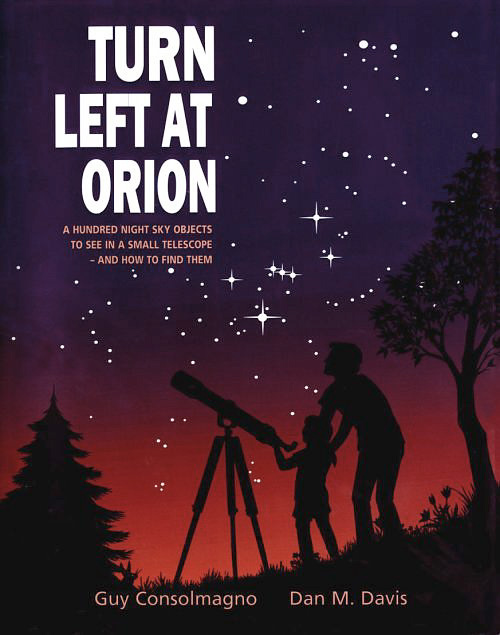







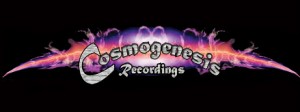




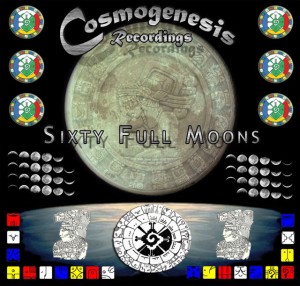

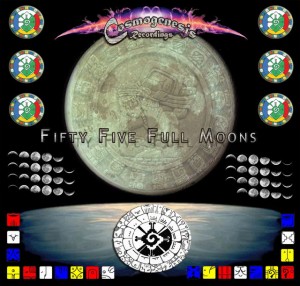

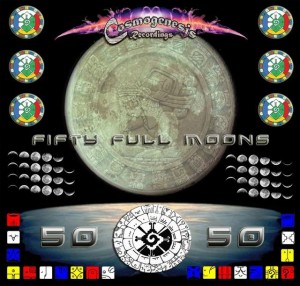

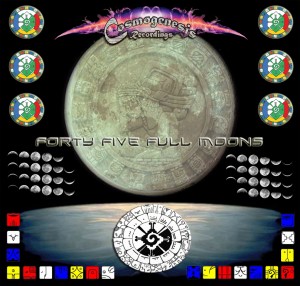

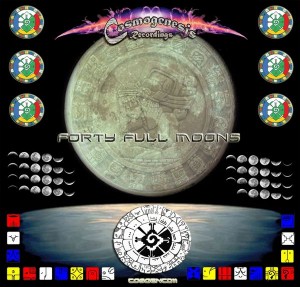

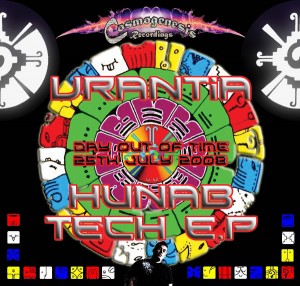

 Planetary Renewal
Planetary Renewal Radiosonic Harmonics
Radiosonic Harmonics Hidden Powers
Hidden Powers Spiritual Practices
Spiritual Practices In Lak'ech Ala Kin
In Lak'ech Ala Kin Garden Culture Communities
Garden Culture Communities The Noospheric Emergence
The Noospheric Emergence





 Label: TIP WORLD ORDER TIPCD026
Label: TIP WORLD ORDER TIPCD026